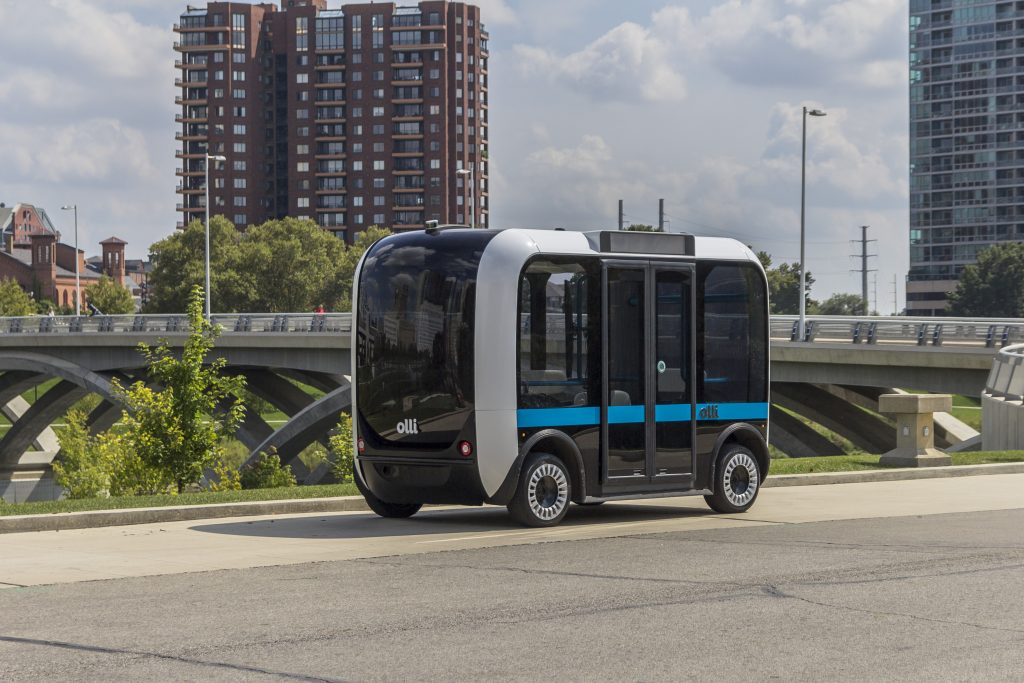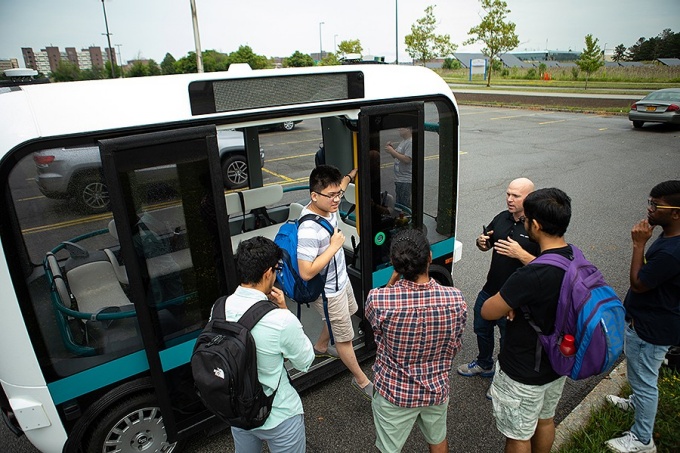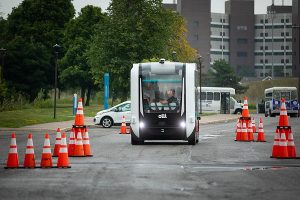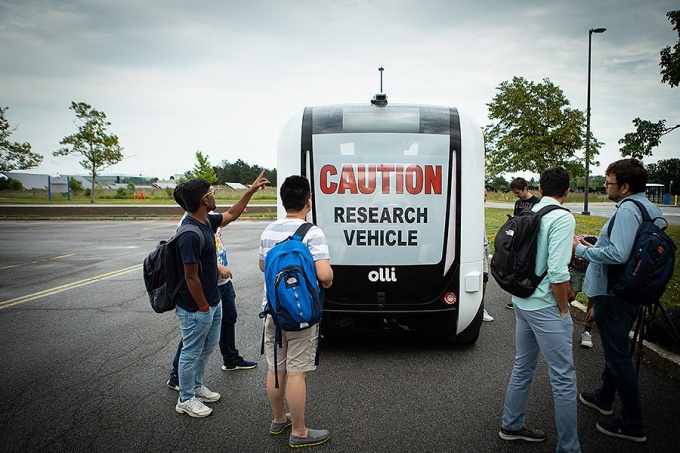Olli, the autonomous 3D printed shuttle from Local Motors, has appeared in locations around the world, from Buffalo to Washington, D.C. to Berlin. Now Local Motors is opening a second fleet challenge for Olli, opening up entries to the D.C. area. The challenge asks municipalities, campuses and designated districts to propose a short-term, local use for Olli. Local Motors CEO and Co-Founder Jay Rogers announced the second challenge just after releasing the names of the winners for the first challenge, which took place in Phoenix, Arizona and Sacramento, California.
Those winners included EVIT, Arizona’s first joint technical education district, and Sacramento State University.
“The Olli AV shuttle represents the direction our transportation is going in the near future,” said California Congresswoman Doris Matsui, who served as a judge on the Sacramento panel. “The nature of the landscape and route chosen by Sacramento State ensure that safety is of the utmost importance during this test period. I am eager to see students and faculty alike utilize this technology and make it a part of their daily lives. Exposure to this type of technology is an important first step.”
Local Motors will begin mapping the locations shortly, and Olli fleets will be deployed to them for public use by the end of January.
“Olli is already transforming the way we think about transportation and it is showing us, from its deployement in Adelaide to its deployment at the University at Buffalo, that autonomous vehicles can be safe, sustainable and practical,” Rogers said. “It’s exciting to know that with each new challenge a new audience will be exposed to self-driving technology. And, we look forward to the insights that will come from each deployment as the ever-changing industry of autonomous vehicles continues to evolve.”
The second challenge will run through February 6th, 2019. One location will be selected to receive a fleet of eight-person Olli vehicles to use for about three months. Further challenges will be launched in the coming months.
“This is an exciting time for intelligent mobility in the Washington region,” said Shailen Bhatt, President and CEO of the Intelligent Transportation Society of America and one of the judges for the second challenge. “Local Motors’ Olli challenge is sure to ignite more innovation around the future of autonomous transportation. I am passionate about technology’s ability to save lives on our roadways, so I’m thrilled about this project.”
 LM Industries, Local Motors’ parent company, is the world’s first digital OEM, and it heavily utilizes 3D printing to quickly and efficiently manufacture its designs. It also allows them to rapidly iterate and customize designs, reducing a typical automotive manufacturer’s process from years to months. 3D printing reduces the number of parts required, using a single material – a carbon fiber-reinforced thermoplastic composite – to 3D print larger and fewer parts. Olli is 3D printed on the Thermwood Large Scale Additive Manufacturing (LSAM) 3D printer, which is, at 10′ x 40′, the world’s largest composite 3D printer, at the Local Motors microfactory in Knoxville, Tennessee.
LM Industries, Local Motors’ parent company, is the world’s first digital OEM, and it heavily utilizes 3D printing to quickly and efficiently manufacture its designs. It also allows them to rapidly iterate and customize designs, reducing a typical automotive manufacturer’s process from years to months. 3D printing reduces the number of parts required, using a single material – a carbon fiber-reinforced thermoplastic composite – to 3D print larger and fewer parts. Olli is 3D printed on the Thermwood Large Scale Additive Manufacturing (LSAM) 3D printer, which is, at 10′ x 40′, the world’s largest composite 3D printer, at the Local Motors microfactory in Knoxville, Tennessee.
Discuss this and other 3D printing topics at 3DPrintBoard.com or share your thoughts below.





